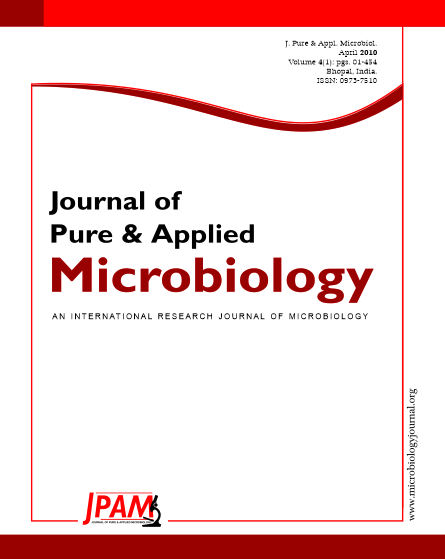Brevibacillus borstelensis – MTCC 9874 was screened from 202 microorganisms isolated from seven different places of Kavre and Morang districts of Nepal by primary and secondary screening methods for xylanolytic activity. The microorganism was grown for 48 hours in five different mediums and minimal salt-yeast extract nutrient medium with xylan (1%w/v) was selected as a medium for further study based on xylanolytic activity measured using DNS method. Study of effect of temperature on xylanolytic activity showed that maximum xylanolytic activity (6.58±1.1 IU/ml) was found at 60ºC. Optimum pH was found to be 7.6 (Xylanolytic activity = 6.81±2.32 IU/ml). Thermal stability study showed that the enzyme has a good stability at 40ºC (91.12%).
Plackett Burman design (Minitab 15.1) with seven variables viz. yeast extract, ammonium sulphate, sodium chloride, magnesium sulphate, calcium carbonate, trace element solution (pH 8) and result showed that yeast extract and xylan were significant factors for xylanase production (> 95% confidence levels). Full factorial Centre composite design (CCD) was used to optimize the two significant factors. Response surface and contour plot were used to locate the optimal value of the two factors.
Xylanase, Plackett-Burman design, Xylanolytic activity, response surface methodology, DNS method
© The Author(s) 2010. Open Access. This article is distributed under the terms of the Creative Commons Attribution 4.0 International License which permits unrestricted use, sharing, distribution, and reproduction in any medium, provided you give appropriate credit to the original author(s) and the source, provide a link to the Creative Commons license, and indicate if changes were made.


